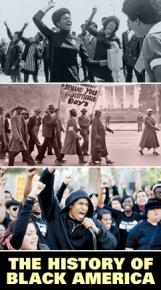Blacks and the 1920s left
In the continuation of a previous article on the early Communist Party and the "Black question," discusses the CP's theory and practice in those years.
THE BLACK radicals attracted to revolutionary socialism by the Russian Bolshevik revolution found themselves isolated by the 1920s.
Marcus Garvey's Universal Negro Improvement Association (UNIA) mobilized hundreds of thousands of Blacks with his vision of racial pride, Black enterprise and "Back to Africa" emigration. Black Communist leaders such as Cyril Briggs considered Garvey a reactionary--but recognized the tremendous potential of the movement. Briggs tried to take part in the UNIA through the African Blood Brotherhood (ABB), a semi-secret group founded in 1919, with Black nationalist aims.
In the early 1920s, most ABB leaders, impressed with the Bolsheviks' support for the national liberation struggles joined the Communist Party. But the Black revolutionaries' efforts got little support from the newly formed Workers' (Communist) Party (CP), which either ignored or misunderstood the Black struggle.
James P. Cannon, the CP leader who later founded the Trotskyist Left Opposition in the U.S., wrote that the CP inherited the old Socialist Party argument that the oppression of Blacks was simply a more extreme form of "economic bondage" that faces all workers. Thus, the left rarely involved itself in Black struggles around questions of racial discrimination.
Socialists in the U.S., Cannon wrote, "had nothing to start with on the 'Black question' but an inadequate theory, a false or indifferent attitude and the adherence of a few individual Blacks of a radical or revolutionary bent. This turned out to be a formula for inaction on the Black front and--incidentally--a convenient shield for the dormant racial prejudices of the white radicals themselves."
SUCH IDEAS had nothing to do with the Bolshevik tradition of the Russian revolutionaries. Lenin had long argued that socialists must support the struggles for self-determination by oppressed nationalities and racial minorities-including Blacks in the U.S., even if it meant defending the right to create their own nation state. At the same time, Lenin argued, socialists must relate to the workers of the oppressed minority, and argue for an independent working class organization and unity across racial and national lines.
Eventually, Lenin and the Communist International pushed American CP leaders closer to their position. The CP convinced Briggs and others to keep the African Blood Brotherhood alive in order to relate to Black workers, especially those influenced by Garveyism.
One of Socialist Worker's earliest features was a monthly series on the history of the African American struggle in the U.S., from slavery to the present day.The History of Black America
This tactic was fruitless. Garvey, whose vision of a Black nation turned more conservative, drove the left out of the UNIA. The red scare and the defeat of the great strikes of 1919 shifted the general political climate sharply to the right. The mass audience that had been open to revolutionary ideas all but disappeared. The ABB's newspaper, The Crusader, which in 1919 had a reported circulation of 33,000, ceased publication in the mid-1920s.
To make matters worse, continued factional fighting in the Communist Party over how to operate in the new conservative period made real organizing impossible. It took the direct intervention of the Comintern to turn the CP outward.
In 1925, the CP created the Trade Union Educational League and the American Negro Labor Conference (ANLC) to organize Black workers excluded by the racist American Federation of Labor (AFL).
The ANLC called for the creation of "interracial labor committees" to "meet jointly for the purpose of bringing the Black workers into the trade unions, preventing discrimination, undercutting of wages, the use of one race against the other in strikes, etc., and for bringing about the action of all workers, Black and white, against lynching and race riots."
To reach Black workers, the Congress started a newspaper, the Negro Champion, edited by former ABB member Richard B. Moore. But according to Black CP member Harry Haywood, the ANLC never got off the ground. Few local units were formed. Resolutions and plans were never carried into action.
The ANLC, denounced by both the AFL and the liberal Black press, got off to a poor start. It attracted only 32 Black and one Mexican-American delegates to its October 1925 founding convention held in Chicago's South sideS ANLC leader and former ABB member Lovett Fort-Whiteman organized the evening's entertainment--a Russian ballet and a Russian-language play!
Though it may seem humorous today, the ANLC's Russian ballet evening was an early indication of a growing Russian dominance of the American CP. Stalin's bureaucratic counter-revolution soon spurred a new wave of faction-fighting in the American party.
So the first 10 years of American communism passed without Blacks being recruited into the party on a large scale. Despite the CP's attempt to shed its "inadequate theory and indifferent attitude," it did not reach what the African Blood Brotherhood recognized as potentially the most revolutionary force in the U.S.--the Black working class.
That was to change dramatically, however, in the 1930s.
First published in the October 1985 issue of Socialist Worker.



